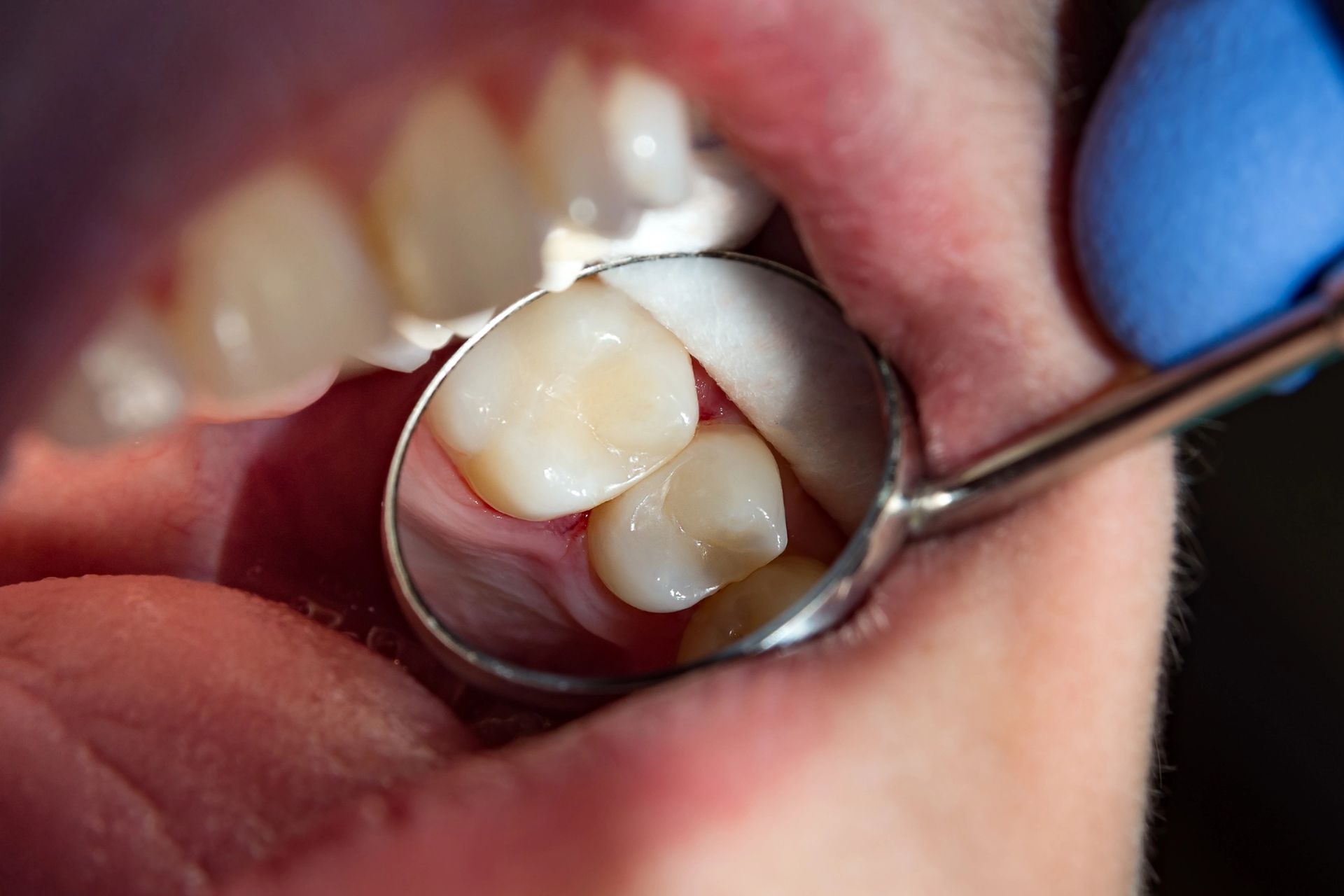
How Long Do Zirconia Crowns Last?
Zirconia crowns are renowned for their durability and strength, making them a popular choice for dental restorations. On average, zirconia crowns can last anywhere from 10 to 15 years, depending on various factors such as oral hygiene practices and the individual's lifestyle. The robust nature of zirconia material contributes to its longevity, providing a reliable solution for those seeking long-term dental restoration options. Understanding how long do zirconia crowns last can help individuals set realistic expectations for their dental care. While zirconia crowns are designed to withstand the pressures of daily use, their lifespan can be influenced by several factors, including the patient's oral habits and overall dental health. Regular dental check-ups and maintaining good oral hygiene can play a significant role in extending the life of these crowns. If you ever find yourself in a situation where your crown becomes dislodged, you might find it helpful to read more about what steps to take by visiting our page on Dental Crown Fell Off What to Do Next to Protect Your Tooth Factors affecting crown longevity The longevity of zirconia crowns can be influenced by several factors, which play a crucial role in determining how long do zirconia crowns last. One of the primary factors is the individual's oral hygiene practices. Regular brushing and flossing can help maintain the integrity of the crown by preventing plaque buildup and gum disease, which can compromise the crown's stability. Additionally, the skill and experience of the dental professional who places the crown can significantly impact its durability. A well-fitted crown is less likely to experience issues such as chipping or loosening over time. Another important factor is the patient's lifestyle habits. For instance, those who engage in teeth grinding or clenching may experience a shorter lifespan for their zirconia crowns due to the excessive pressure exerted on the dental work. Dietary choices also play a role; consuming hard or sticky foods can lead to wear and tear on the crown. Furthermore, regular dental check-ups are essential for monitoring the condition of the crown and addressing any potential issues early on. For those interested in exploring options for dental crowns, you can find more information about Affordable Dental Crowns Columbia by visiting our Affordable Dental Crowns Columbia page. Importance of Regular Dental Check-Ups Understanding how long do zirconia crowns last involves recognizing the crucial role of regular dental check-ups in maintaining their longevity. These appointments allow dental professionals to monitor the condition of your crowns, ensuring they remain in optimal shape and function. Regular check-ups can help identify any potential issues early, such as wear or damage, which might affect the lifespan of your zirconia crowns. By keeping up with these visits, you contribute to the overall health of your dental work and ensure that your zirconia crowns continue to serve you well over time.Role of Oral Hygiene Practices The longevity of zirconia crowns is significantly influenced by the role of oral hygiene practices. Maintaining a consistent and thorough oral care routine can help ensure that zirconia crowns last as long as possible. Regular brushing and flossing are essential to prevent plaque buildup, which can lead to gum disease and affect the stability of the crowns. Additionally, routine dental check-ups play a crucial role in monitoring the condition of the crowns and addressing any potential issues early on. Understanding how long do zirconia crowns last involves recognizing the impact of daily oral hygiene habits on their durability. For those in Columbia seeking more information, Design Dentistry Columbia offers insights into maintaining dental health, and you can learn more by visiting your local Columbia Dentist.
Impact of Dietary Habits
Dietary habits can significantly influence how long zirconia crowns last. Consuming a diet high in sugary foods and acidic beverages may contribute to the wear and tear of dental restorations, including zirconia crowns. These dietary choices can lead to an increased risk of decay around the crown margins, potentially compromising their longevity. On the other hand, a balanced diet that supports overall oral health can help maintain the integrity of zirconia crowns over time. Understanding the relationship between diet and dental health is essential for those looking to maximize the lifespan of their zirconia crowns.Influence of Teeth Grinding
Teeth grinding, also known as bruxism, can significantly impact how long zirconia crowns last. This involuntary habit exerts excessive pressure on dental restorations, including zirconia crowns, potentially leading to premature wear or damage. While zirconia is renowned for its durability and strength, the constant grinding motion can compromise its longevity over time. Understanding the effects of teeth grinding is crucial when considering how long zirconia crowns last, as it highlights the importance of addressing underlying dental habits that may affect their lifespan.Professional Cleaning Frequency
Understanding the professional cleaning frequency is essential when considering how long do zirconia crowns last. Regular dental check-ups play a crucial role in maintaining the longevity of zirconia crowns. During these visits, dental professionals can assess the condition of the crowns and perform necessary cleanings to prevent plaque buildup and other potential issues. While the specific frequency of professional cleanings may vary based on individual needs, maintaining a consistent schedule with your dentist ensures that zirconia crowns remain in optimal condition, contributing to their durability and lifespan.Signs of Crown Wear and Tear
Understanding the signs of wear and tear on zirconia crowns is essential for anyone curious about how long do zirconia crowns last. Over time, you might notice subtle changes such as slight discoloration or a dulling of the crown's surface, which can indicate natural aging. Additionally, small chips or cracks may appear, especially if the crown has been exposed to excessive force or grinding. These signs can serve as indicators that the crown is experiencing normal wear, which is a factor in determining its longevity. Regular dental check-ups can help monitor these changes and assess the overall condition of your zirconia crowns.htmlWhen to Consult a Dentist
Understanding how long do zirconia crowns last is essential for maintaining optimal oral health. While zirconia crowns are known for their durability and longevity, regular dental check-ups are crucial to ensure they remain in good condition. If you notice any discomfort, changes in bite, or visible damage to your crown, it may be time to consult a dentist. Regular professional evaluations can help identify potential issues early, ensuring that your zirconia crowns continue to function effectively and maintain their aesthetic appeal over time.Conclusion
Understanding how long do zirconia crowns last is essential for maintaining a healthy smile. For more information, call 803-408-7163 or [read reviews on Google Maps](https://maps.app.goo.gl/Mn6Pt8Sw7v1e67Za8).

Are you considering the pros and cons of various tooth fillings? Choosing the right type of filling can impact not only your dental health but also your overall well-being. This post will explore the general advantages and disadvantages associated with different kinds of dental fillings, helping you understand how they differ in terms of their general properties and potential effects on oral health.
Durability of Different Filling Materials
When considering various tooth fillings, one of the most crucial factors to evaluate is the durability of the materials used. Amalgam fillings, often made from a mixture of metals including silver, mercury, tin, and copper, are known for their strength and longevity. They typically last between 10 to 15 years and are less likely to break compared to other types. Composite fillings, which are crafted to match the color of your teeth, provide a more aesthetic appeal but generally have a shorter lifespan, usually around 5 to 7 years. These fillings are made from a mixture of plastic and fine glass particles and are less durable under the pressure of chewing.
Porcelain and gold fillings represent other options, each with its own set of advantages in terms of durability. Porcelain fillings are highly resistant to staining and can last more than 15 years but may require more tooth structure to be removed during the installation process. Gold fillings are exceptionally durable, often lasting more than 20 years, but they come at a higher cost and are more noticeable than porcelain or composite fillings. Choosing the right material depends largely on the location of the filling, the size of the area to be filled, and personal preferences regarding aesthetics and budget. For a detailed look at how these fillings are applied, consider reading our Step-by-step guide to the tooth filling procedure.
Cost Comparison of Filling Options
When considering various tooth fillings, one of the primary factors for many people is cost. The price of tooth fillings can vary widely depending on the materials used and the complexity of the procedure. Generally, amalgam fillings, made from a mixture of metals, tend to be the most affordable option. On the other hand, composite resin fillings, which are designed to match the color of your natural teeth, are typically more expensive due to the materials and the labor involved in making them look aesthetically pleasing.
The choice between different types of fillings often involves a balance between cost and aesthetic preference. While some may opt for the durability and cost-effectiveness of metal fillings, others might prefer the natural appearance of composite fillings despite the higher price tag. Understanding these cost differences is crucial when selecting the right option for your needs. For more information on affordable options, you might consider visiting Affordable Fillings in Columbia.
Aesthetic Impact of Various Fillings
When considering the aesthetic impact of various tooth fillings, it's important to recognize how different materials can influence the appearance of one's smile. Various tooth fillings, including those made from composite, amalgam, gold, or ceramic, each have distinct visual characteristics that may either blend in or stand out against the natural color of teeth. The choice of material can affect the overall look of the dental restoration, potentially impacting one's confidence and satisfaction with their smile.
Longevity and Wear of Fillings
When considering various tooth fillings, longevity and wear are crucial factors. Different materials used in fillings can affect their durability and how well they withstand daily use. Some materials may last longer but could be prone to wear if exposed to excessive force or harsh conditions. Understanding these aspects can help in making informed decisions about dental health. For more detailed information, consider consulting with Design Dentistry Columbia, your trusted Columbia Dentist.
Comfort and Sensitivity Post-Procedure
When considering various tooth fillings, it's important to acknowledge the differences in comfort and sensitivity that patients might experience after the procedure. Each type of filling material can react differently with the natural structure of the teeth, potentially affecting how a person feels post-treatment. Sensitivity to temperature or pressure is common, and the duration and intensity of this sensitivity can vary depending on the materials used and the individual's response to the dental work. Understanding these aspects can help individuals set realistic expectations about their recovery period following the placement of various tooth fillings.
Maintenance Needs for Different Fillings
When considering various tooth fillings, understanding their maintenance needs is crucial for long-term dental health. Amalgam fillings, often used for their durability and cost-effectiveness, typically require minimal maintenance but are more noticeable than other options. Composite fillings, while aesthetically pleasing as they match the color of your teeth, may need more frequent check-ups and replacements due to their less durable nature. Ceramic fillings offer a balance between aesthetics and durability but can be susceptible to cracking if not cared for properly. Lastly, gold fillings are extremely durable and require similar maintenance to amalgam but come at a higher cost. Choosing the right type of filling not only depends on aesthetic preference and budget but also on the willingness to commit to potentially varying maintenance routines.
Impact on Oral Health
When considering the pros and cons of various tooth fillings, it's crucial to assess their impact on oral health. Different materials used in fillings, such as amalgam, composite, gold, and ceramic, each interact differently with the natural structure of teeth and gums. Amalgam fillings, for instance, are durable but contain mercury, which can be a concern for some patients. Composite fillings are aesthetically pleasing and require less drilling, thus preserving more of the natural tooth, but they may not last as long as metal fillings. Gold fillings are highly durable and biocompatible, reducing the risk of corrosion and allergic reactions. Ceramic fillings are also favorable for their aesthetic and biocompatibility, though they can be abrasive to opposing teeth over time. Choosing the right type of filling from various tooth fillings can significantly influence long-term oral health, comfort, and overall well-being.
Suitability for Various Cavity Sizes
When considering various tooth fillings, it's crucial to assess their suitability based on the size of the cavity. Smaller cavities often benefit from composite resins or glass ionomer fillings, which can be precisely applied and shaped to maintain a more natural appearance. For larger cavities, amalgam or gold fillings might be preferable due to their durability and strength, ensuring the tooth structure remains intact under greater pressure. Each type of filling material offers distinct advantages depending on the cavity size, making it essential to choose wisely to ensure optimal dental health and functionality.
Allergic Reactions to Filling Materials
When considering various tooth fillings, it's important to be aware of potential allergic reactions to filling materials. Although rare, some individuals may experience adverse responses to components used in dental fillings, such as metals in amalgam fillings or specific chemicals in composite resins. Symptoms can range from local discomfort at the filling site to more generalized skin rashes and itching. Discussing your history of allergies with your dentist before selecting a filling material can help prevent such complications and ensure a safer dental treatment experience.
Conclusion
Exploring the pros and cons of various tooth fillings can help you make informed decisions. For further inquiries, call us at 803-667-3919 or read our reviews on Google Maps.







